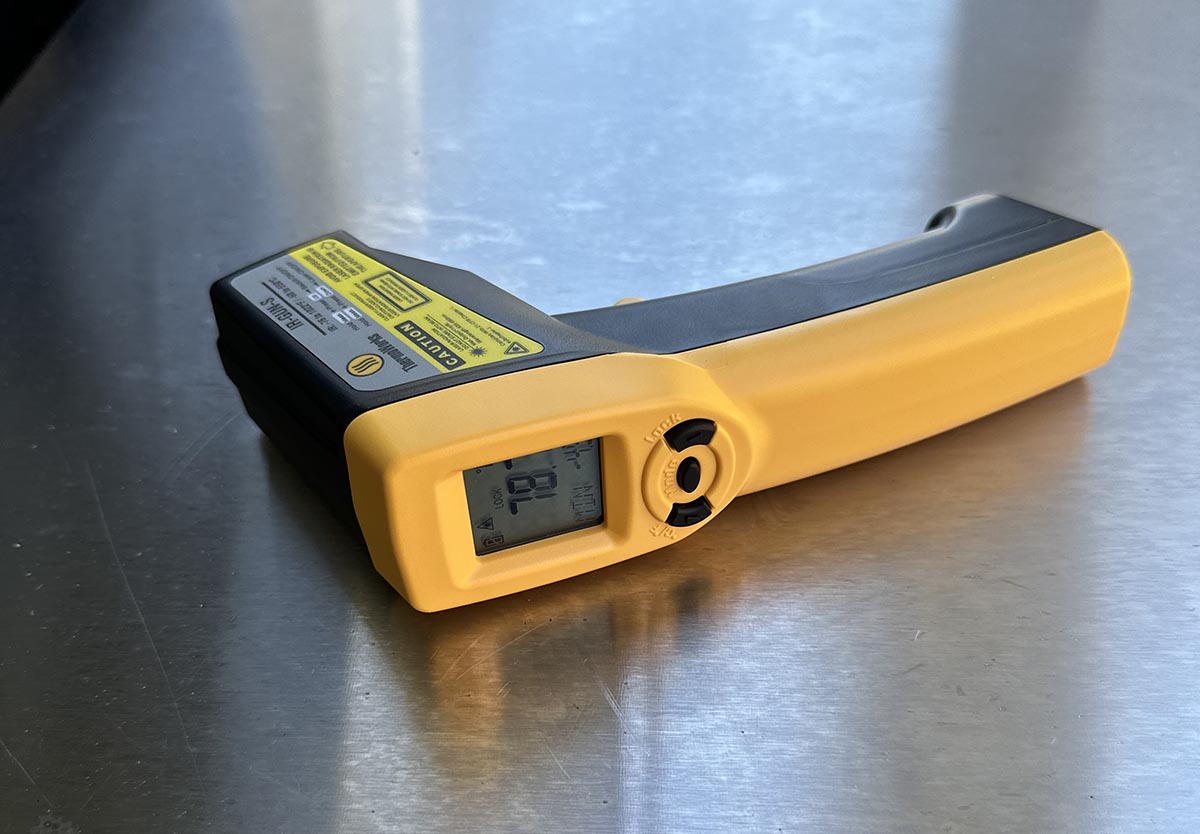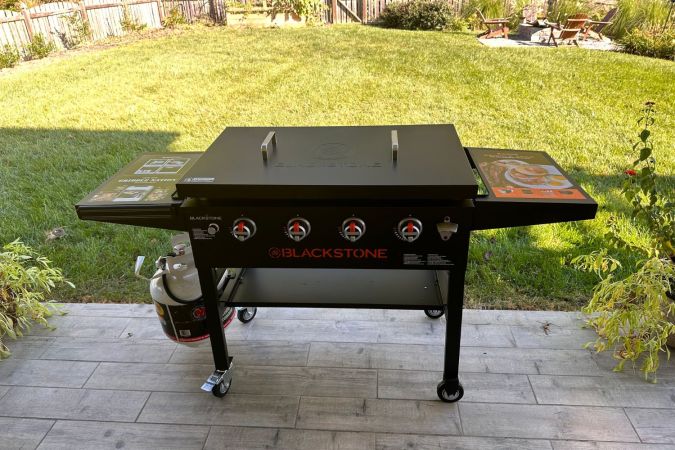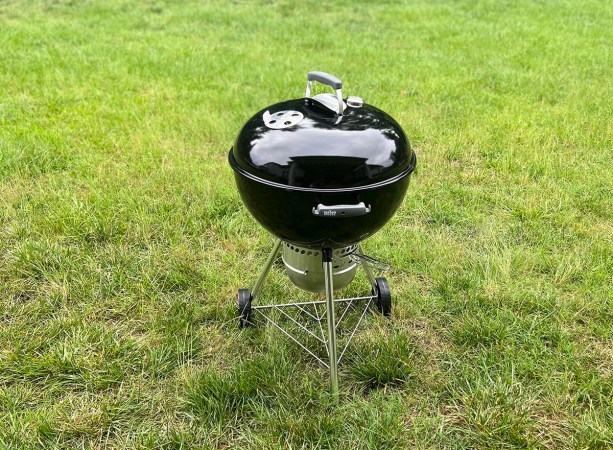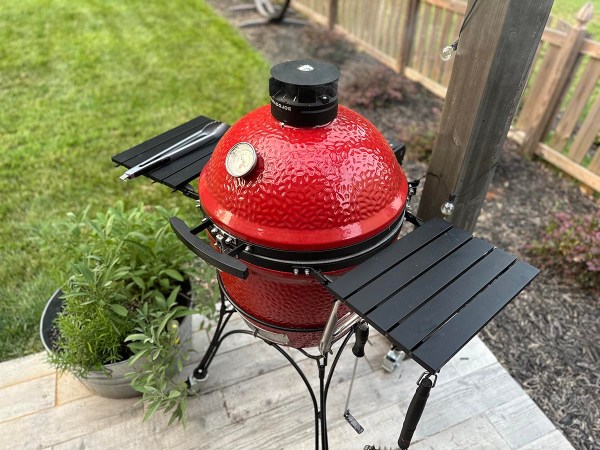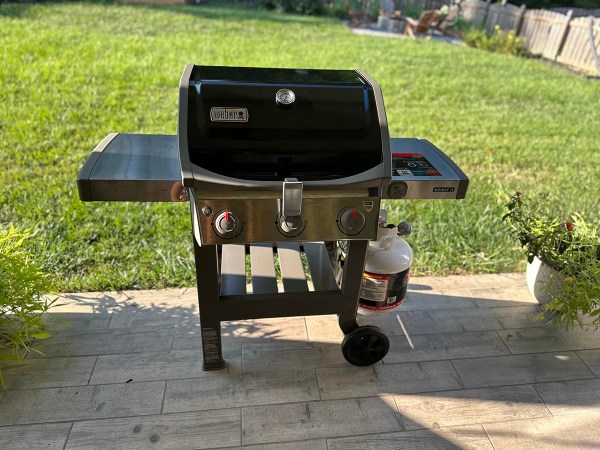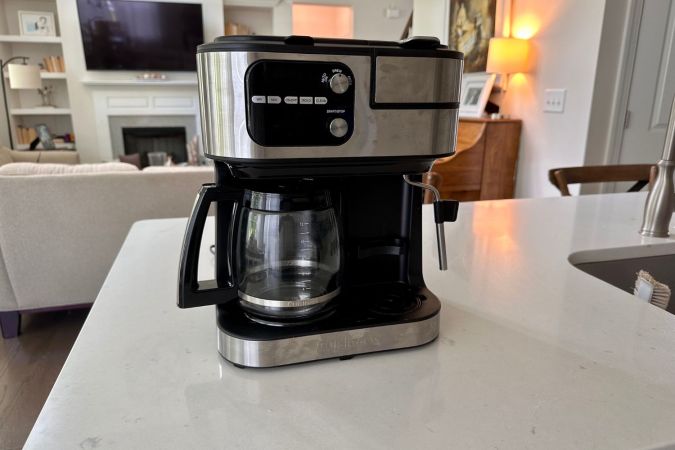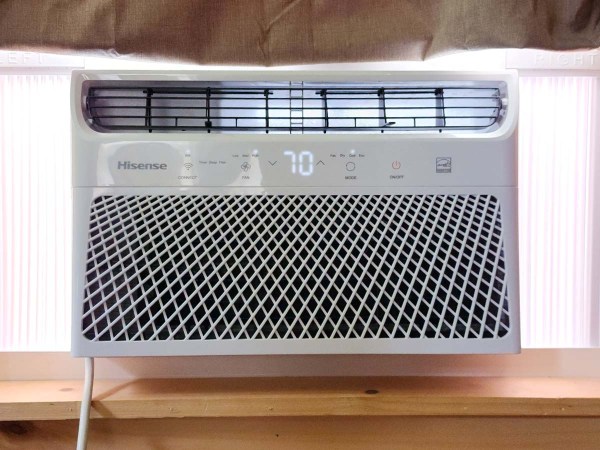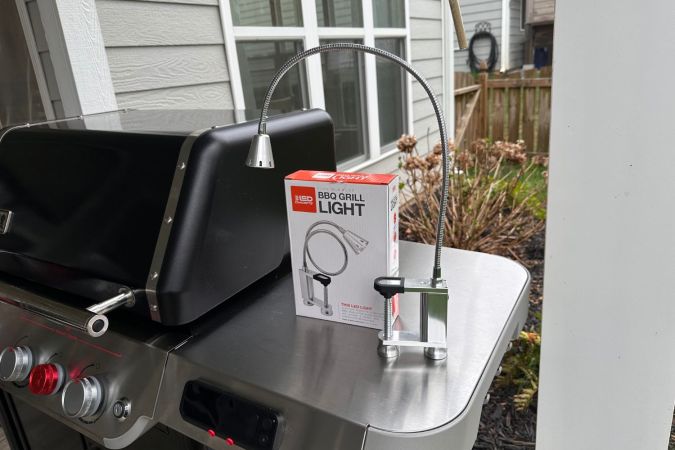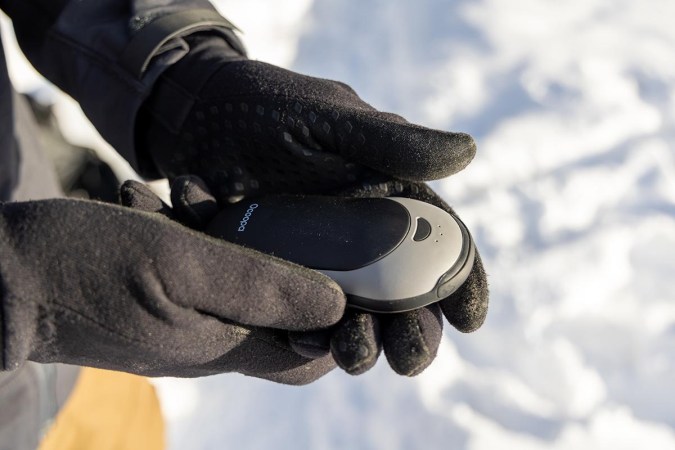We may earn revenue from the products available on this page and participate in affiliate programs. Learn More ›
An infrared thermometer is a handy tool to have in an indoor or outdoor kitchen for measuring the temperature of cooking surfaces before you throw on the steaks or burgers, and ThermoWorks has a reputation for making some of the top IR guns in the business. I put one of its most popular models to the test to see just how well the ThermoWorks Industrial IR Gun performs in the kitchen.
My testing involved measuring temperatures on a variety of different hot surfaces, ranging from cast-iron skillets to nonstick frying pans to porcelain grill grates. I also evaluated its ability to measure accurate cold temperatures by testing it on a fridge and freezer. I found that it lives up to its reputation thanks to its durable construction, intuitive design, many useful features, and accurate readings.
ThermoWorks Industrial Gun Infrared Thermometer: At a Glance
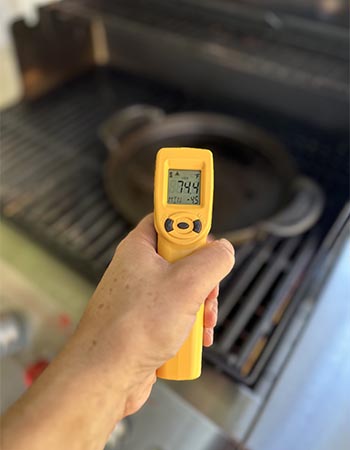
Rating: 9/10
SPECS
- Temperature range: -76 to 1,022 degrees Fahrenheit
- Accuracy: 2 percent
- Range ratio: 12:1
PROS
- Provides very accurate temperature readings on all types of surfaces
- Commercial-grade heavy-duty plastic housing that can endure drops onto hard surfaces
- Loaded with features and settings, including emissivity, temperature alarms, and a backlight
CONS
- Pro-grade industrial design and construction comes with a high price tag
- Turning the backlight and laser pointer off and on is overly complicated
Get the ThermoWorks infrared thermometer at ThermoWorks for $77.
What is the ThermoWorks infrared thermometer?
Like all infrared thermometer guns, the ThermoWorks infrared thermometer works by shooting an infrared beam at an object to determine its surface temperature. With its 12:1 optical ratio, it can measure a 1-inch area from 1 foot away or a 2-inch area from 2 feet away within a few degrees of accuracy.
This model is designed for both industrial or home use. When used for the latter, the ThermoWorks IR gun can detect hot spots in machinery or determine if an HVAC system is cooling properly, allowing a mechanic or technician to schedule repairs before there’s a breakdown.
While the ThermoWorks IR gun may be designed for professional use, it also has plenty of practical uses in the home, the biggest of which is in the kitchen. Chefs can use it to gauge the surface temperature of a pan or a grill to determine if it’s the right temperature for searing a steak or burger. It’s also a handy tool for other household needs, such as checking the temperature of pool water or determining whether a plastic slide on a backyard playset is cool enough for safe use.
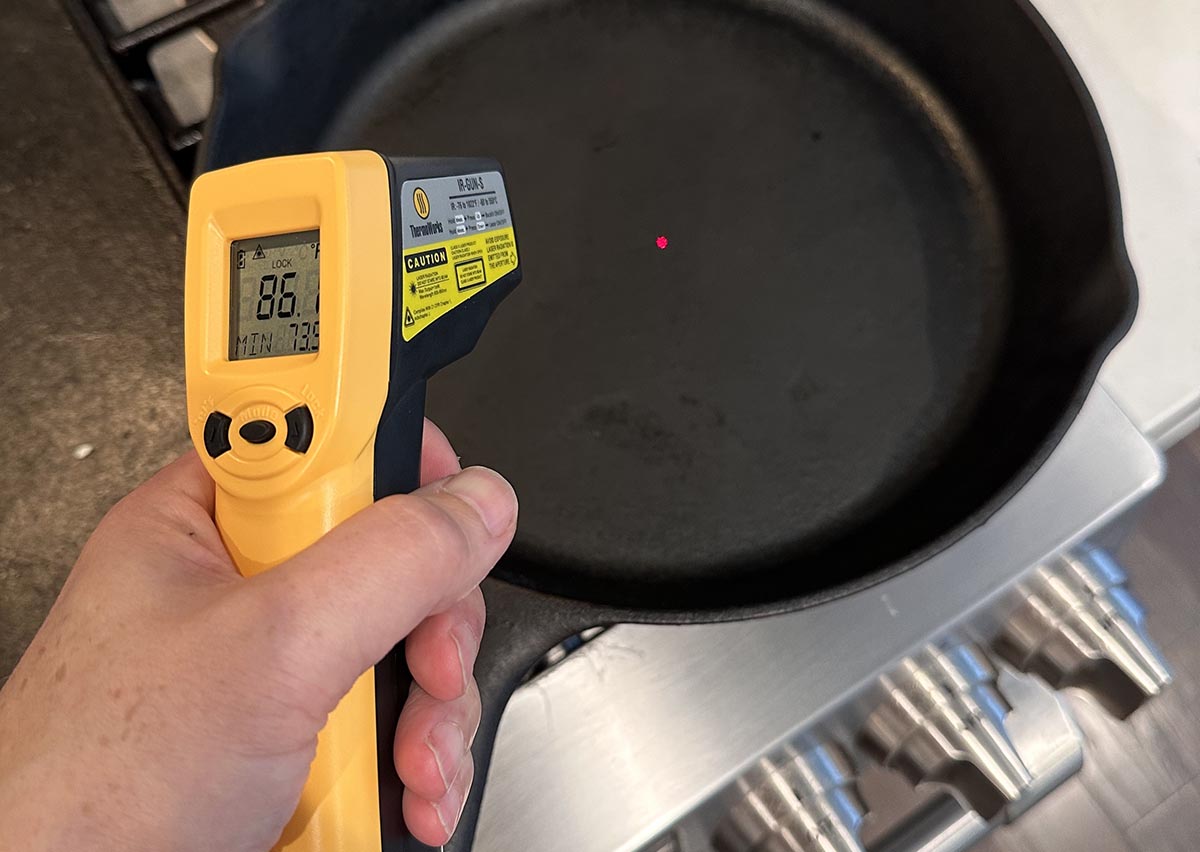
Easy to Use With Tons of Features
Most IR guns I’ve tested are easy to use right out of the box, and the ThermoWorks IR gun is no exception. It runs off of two AAA batteries, which are included. After loading the batteries, the ThermoWorks is ready to go. Simply point it at the surface you want to test, pull the trigger, and the surface temperature of the object appears in less than a second on the digital display.
The ThermoWorks gun comes equipped with numerous settings that add to its functionality and make it easier to use. Set high/low temperature alarms that will go off when the gun registers a temperature outside those parameters, a feature I found to be particularly handy when preheating a pan to the optimal 450 to 500 degrees Fahrenheit for searing steaks and burgers.
There are also emissivity settings that make it possible to use the IR gun on shiny surfaces. The ThermoWorks, like most IR guns, has a default emissivity setting of 0.95, which is ideal for dark surfaces such as a cast-iron frying pan, nonstick skillet, or grill grates. However, a shiny stainless steel pan has a lower emissivity or around 0.59, which means users need to be able to change the emissivity value if they want to get an accurate reading for these types of surfaces.
Other features include a backlight that makes the display easier to read, a laser pointer that helps with aiming the gun, and multiple display options that can show the maximum, minimum, and average temperature for a series of readings—a nice feature if users want to track changes in temperature on their grill.
Navigating through all these features and settings could be complicated, but ThermoWorks makes it easy thanks to a three-button design. I had no problem cycling through most of the IR gun’s settings and making changes with my thumb. However, I didn’t like the fact that turning the backlight or laser pointer on and off involves holding the trigger while pressing another button, which I found to be a little awkward.
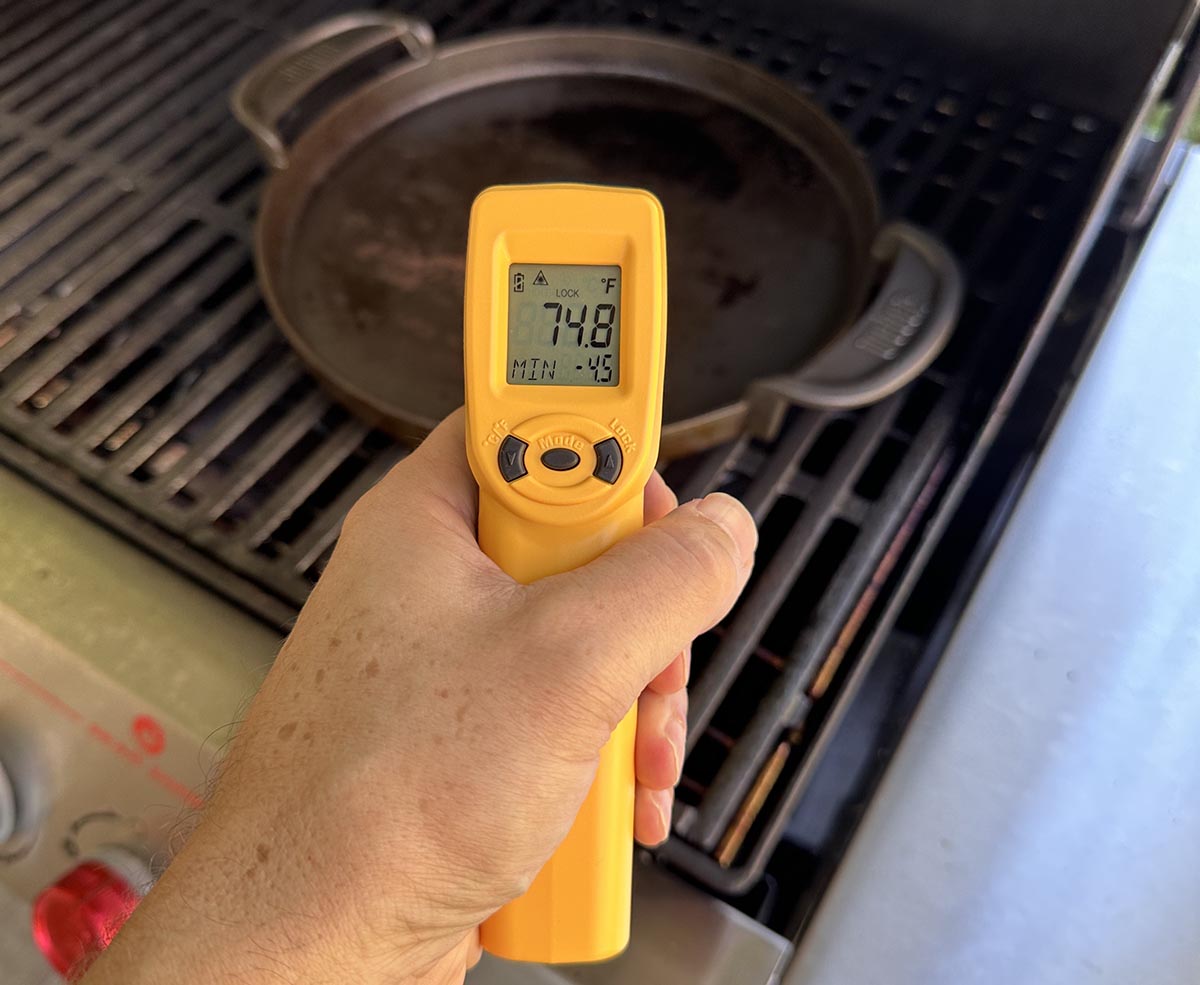
Durability and Power Are a Plus
The ThermoWorks IR gun is designed for the industrial jobsite and thus comes with a higher price tag than IR guns designed solely for home use, so I expected it to be durably built and well designed. And, for the most part, it is.
It features a hard molded plastic housing that can withstand drops on a hard surface. That said, it’s not the most durable IR thermometer I’ve tested. The Fluke 62 MAX infrared thermometer, for example, has a beefier rubberized housing and is rated to survive drops of nearly 10 feet, though I should note that it’s also pricier. That said, the ThermoWorks is certainly more than durable enough to handle home use.
The ThermoWorks gun is equipped with a digital display with a backlight that I found to be easy to read when using it in complete darkness or in bright sunlight. Its laser pointer is also one of the most powerful I’ve tested. I had no problem finding a mark on a smooth surface, even in direct sunlight.
Great Accuracy for Hot and Cold Surfaces
ThermoWorks IR thermometers are well regarded for their accuracy, and this model is no exception. During testing, I used the ThermoWorks Industrial IR gun in a variety of settings. In the kitchen, I tested it on a hot cast-iron skillet and a nonstick frying pan and had no problem getting an accurate reading that was within a few degrees Fahrenheit of the actual surface temperature. I also tested it on a stainless steel frying pan, adjusting the emissivity to account for the surface, and the ThermoWorks returned one of the most accurate readings for shiny surfaces of any IR thermometer I’ve tested.
Along with testing the ThermoWorks on hot surfaces, I also tested it on cool surfaces, including a freezer and refrigerator. Typically, IR thermometer readings for colder surfaces have a bigger discrepancy between the reading of the actual temperature. While that was also the case with the ThermoWorks, I found it to have a smaller margin of error of other IR thermometers I tested.
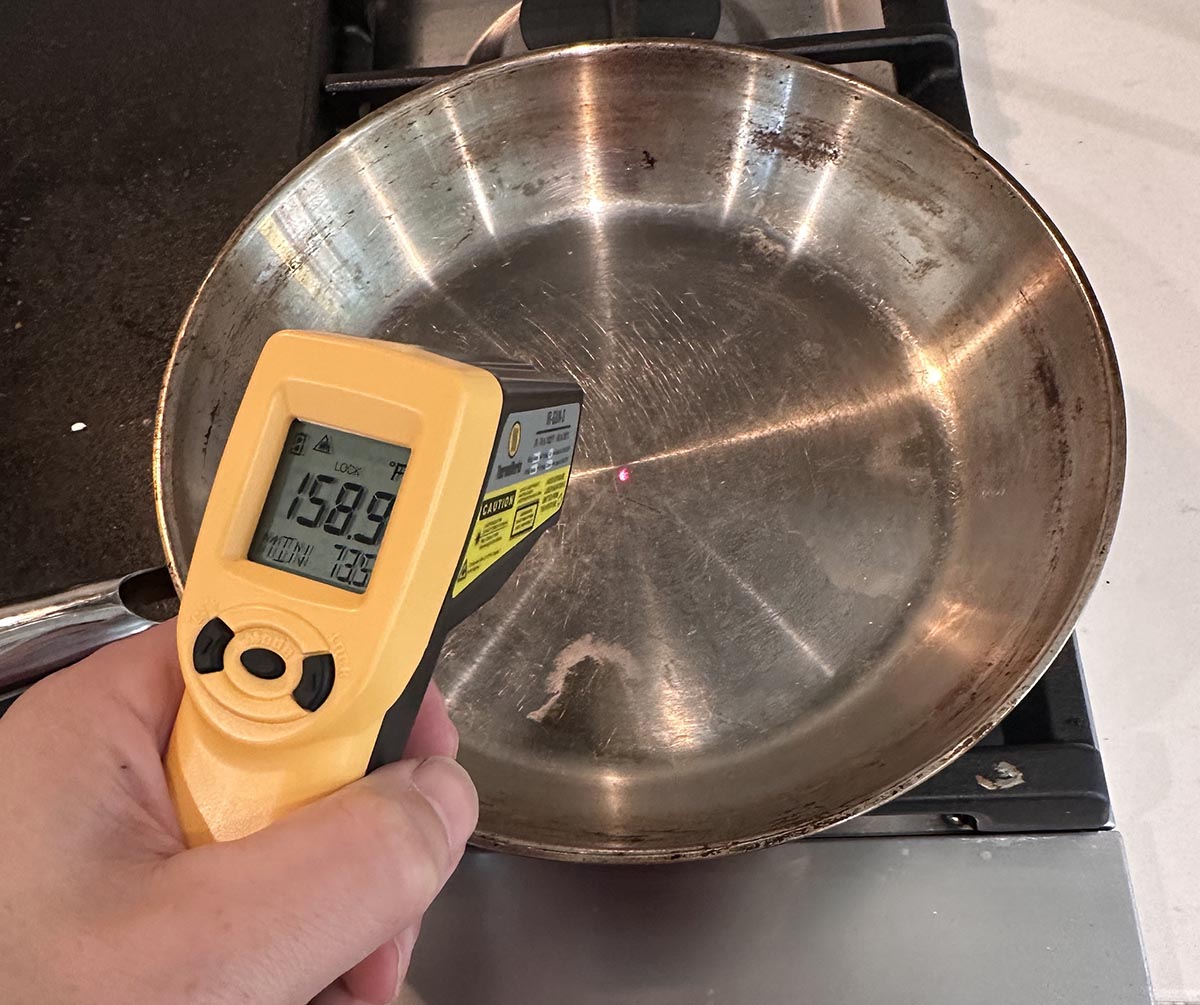
Is the ThermoWorks IR gun worth the money?
With a price tag of around $77, the ThermoWorks IR gun is among the pricier infrared thermometers out there. But, given its features and build quality, the ThermoWorks IR gun is worth the money. It has emissivity controls that make it capable of taking accurate temperature readings on a much wider variety of surface types than cheaper IR guns that lack this capability. It also has other features that add to its value, including the ability to set high and low alarms, a backlight that makes reading the display easier, and one of the most powerful laser pointers of any IR gun we tested.
The ThermoWorks’ build quality also adds to its value. Since it’s designed for industrial use, it’s tough enough to handle falls off kitchen counters or grill side shelves. Of course, the most important characteristic of an IR gun is accuracy, and the ThermoWorks excels in this area as it’s one of the most accurate IR guns that’s been tested at BobVila.com. All of this adds up to an infrared thermometer that’s well worth its price tag.
Should you buy the ThermoWorks IR gun?
The ThermoWorks IR gun is designed for industrial uses, so you’re paying for features and build quality that’s professional grade. Thus, the ThermoWorks may be overkill if you’re only planning to use it for the occasional backyard barbecue. There are other more affordable infrared thermometers out there, including the Cuisinart Infrared Surface Thermometer, which is designed solely for kitchen use and is therefore half the price of the ThermoWorks.
There’s also the ThermoPro 2-in-1 Instant Read Thermometer, which functions as both an infrared thermometer and meat thermometer and also costs about half the price of the ThermoWorks IR gun. However, if you’re a serious home chef or grill master and plan on using this IR thermometer regularly, or if you need one for other household uses, it may make sense to spring for the ThermoWorks industrial version. It will provide you with the most accurate temperature readings and can hold up for a long time.
Get the ThermoWorks infrared thermometer at ThermoWorks for $77.
Meet the Tester
Tony Carrick is a freelance writer specializing in home improvement, landscaping, technology, home security, and design. His articles have been featured on such sites as Popular Mechanics, Futurism, Field & Stream, 360 Reviews by U.S. News & World Report, Pro Tool Reviews, and more. Carrick has conducted rigorous product testing on everything from power tools to home security systems to backyard grills. With each review, his goal is to help readers determine whether a product meets their needs and if it is or isn’t worth its price tag.

